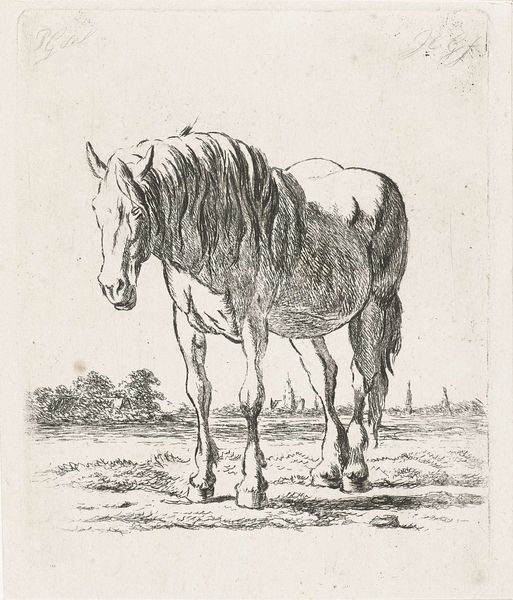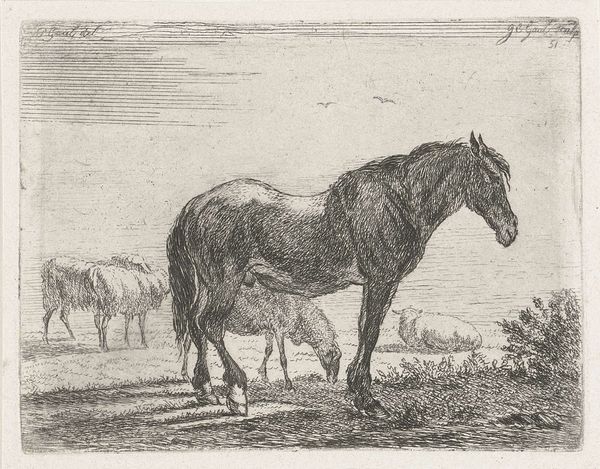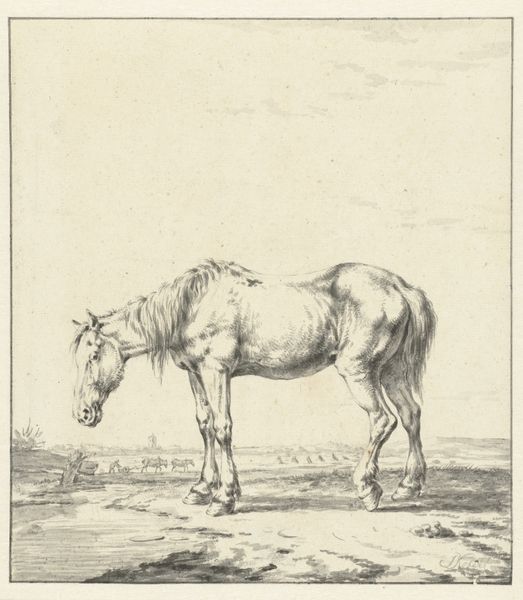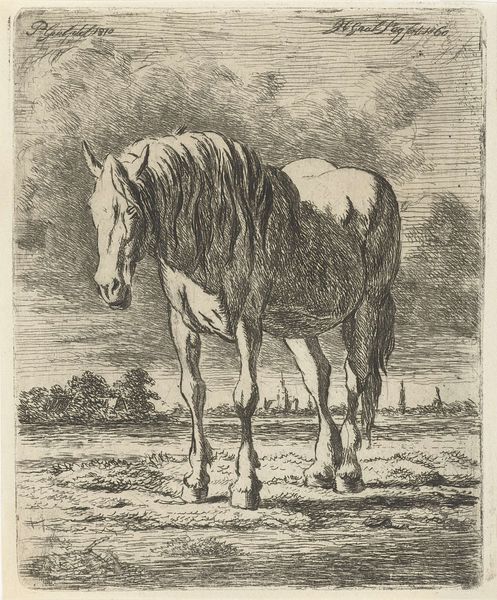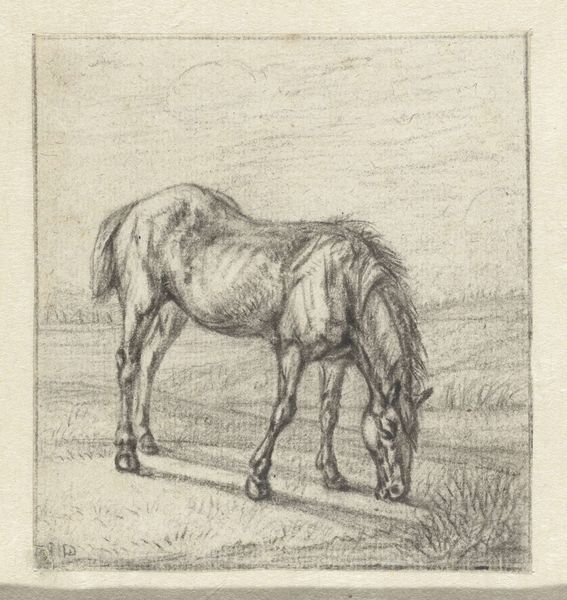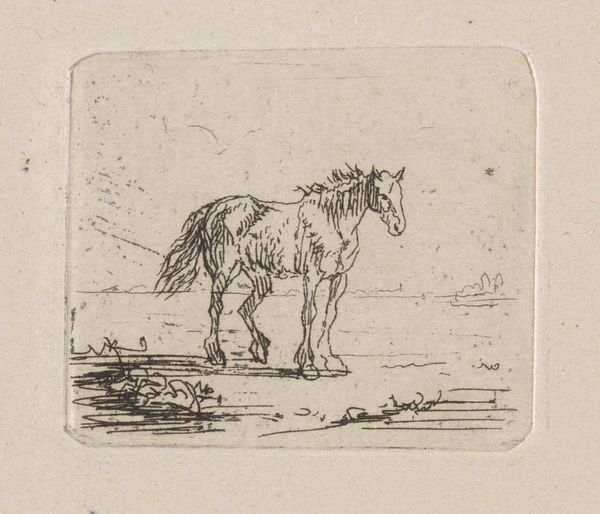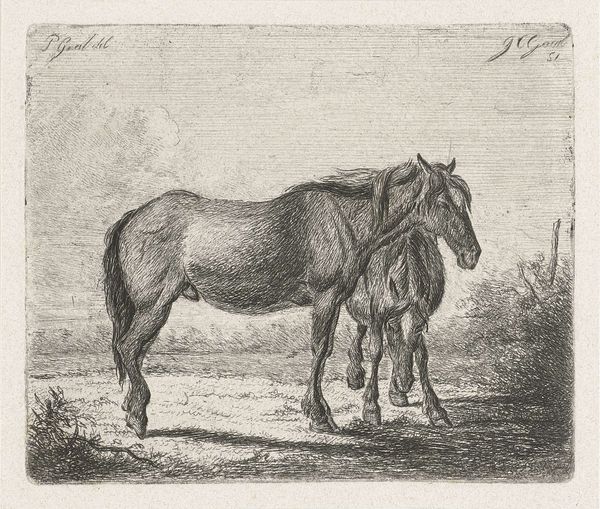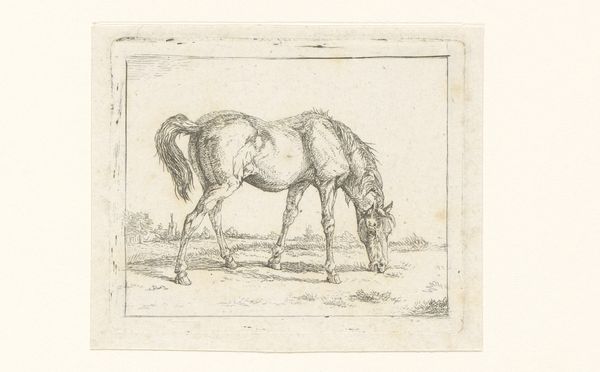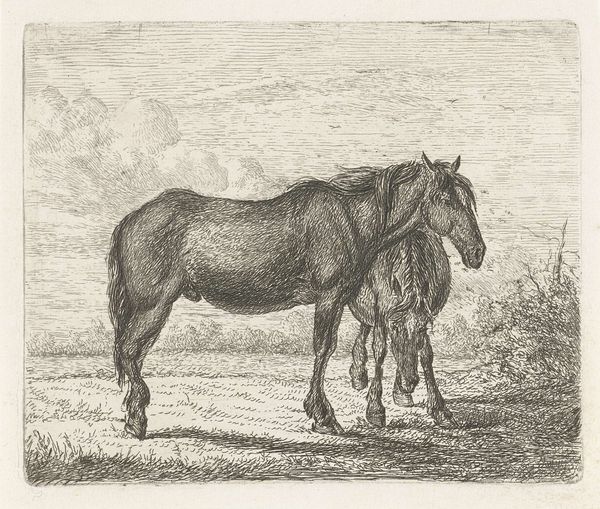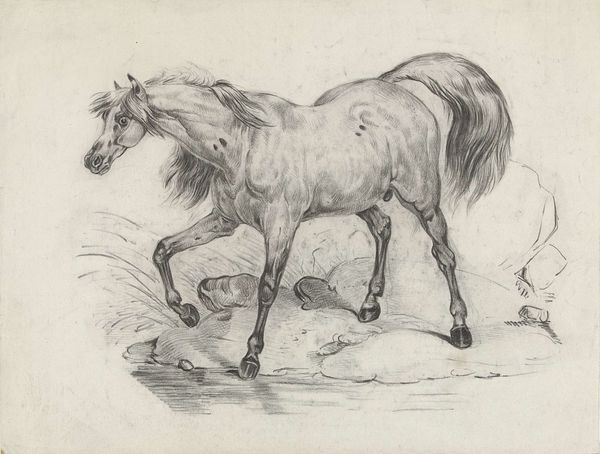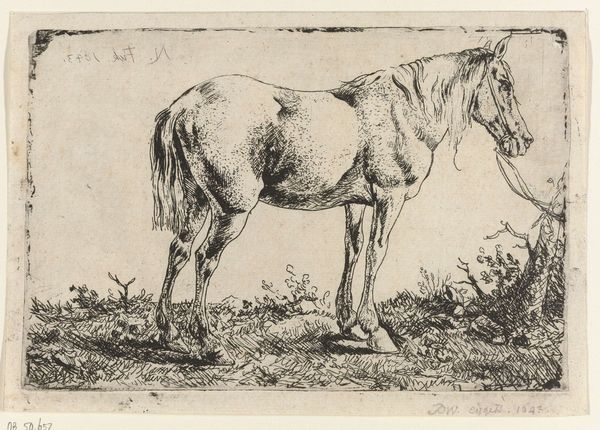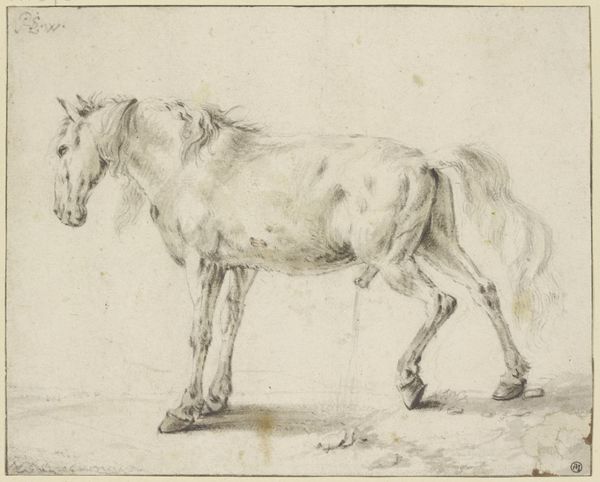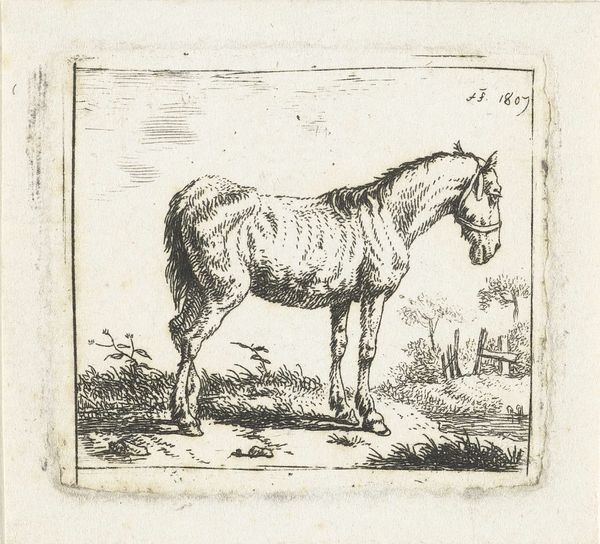
drawing, print, etching
#
drawing
#
animal
# print
#
etching
#
landscape
#
form
#
line
#
realism
Dimensions: height 84 mm, width 107 mm
Copyright: Rijks Museum: Open Domain
Curator: What a quietly powerful piece. This is "Drinkend paard" by Jan Dasveldt, created sometime between 1780 and 1855. It’s an etching, so a print made from an incised plate. Editor: There's a starkness to it. The stark reality of work, toil, the beast burdened by its need for water and rest. A certain melancholy settles over me. Curator: It does resonate with those themes. The technique itself speaks volumes about labour. The etching process, physically demanding, mirroring the horse’s own physical labour. Editor: Indeed. The labour of the artist also mimics the labor of the animal. The social hierarchy is inherent in how Dasveldt creates the print using line and form. Curator: The line work too indicates the conditions from which the animal emerges. Notice how precise and economical it is. What do we make of the horse’s position in this broader landscape? The relative value assigned. Editor: Yes. But look also to the relative quality of lines defining the water surface versus those sketching background field. They seem qualitatively different – it suggests perhaps access and consumption for this valuable asset and perhaps some sort of social critique. What commentary can be drawn about how labour power becomes bound and embodied? Curator: I think we can definitely read a subtle commentary on class and utility there, absolutely. Consider the Dutch Republic's history of animal labor within the development of landscape art. This work, I suggest, reflects a broader power structure—nature serving humanity's needs. It also reflects society’s relationship with, its exploitation of animals. It mirrors social stratification – who toils and who benefits from that toil. Editor: Dasveldt leaves us with such economy here to really mull it all over. The act of looking closer at this etching encourages a deeper contemplation not just of its social construction but of human connection. Curator: A fitting reflection—Dasveldt provides us space for reflection on more than one front. Editor: Agreed; it feels like we can understand the human-animal relationships simply in an efficient image of material existence.
Comments
No comments
Be the first to comment and join the conversation on the ultimate creative platform.
